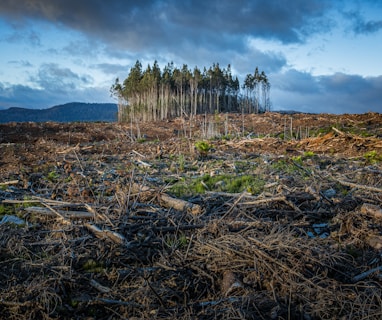How to build a more resilient future in the face of climate change
Climate change is already having a major impact on our planet, and it's only going to get worse. We need to take action now to adapt to climate change and build a more resilient future.
9/12/20234 min read


Introduction
Climate change is real, it's happening now, and it's caused by human activities. The effects of climate change are already being felt around the world, in the form of more extreme weather events, rising sea levels, and changes in plant and animal life.
If we don't take action to address climate change, the effects will only get worse. We could see more frequent and severe droughts, floods, and heat waves. Sea levels could rise by several feet, displacing millions of people. And extreme weather events could cause billions of dollars in damage.
What is climate change adaptation?
Climate change adaptation is the process of adjusting to the effects of climate change. This can include things like building seawalls to protect coastal communities from flooding, developing drought-resistant crops, and improving early warning systems for extreme weather events.
Why is climate change adaptation important?
Climate change adaptation is important because it can help us to reduce the negative impacts of climate change. By adapting to climate change, we can protect our communities, our infrastructure, and our economy.
What are some ways to adapt to climate change?
There are many ways to adapt to climate change. Some of the most common adaptation strategies include:
Building seawalls and levees to protect coastal communities from flooding.
Developing drought-resistant crops and water conservation measures to cope with water scarcity.
Improving early warning systems for extreme weather events to help people stay safe.
Relocating communities that are at risk from climate change.
Restoring natural ecosystems, such as forests and wetlands, to help absorb carbon dioxide and mitigate the effects of climate change.
Increasing energy efficiency in buildings and transportation.
Investing in renewable energy sources.
Creating green infrastructure, such as rain gardens and bioswales.
Educating the public about climate change and adaptation.
What can I do to help?
There are many things that you can do to help adapt to climate change. Some of the things you can do include:
Reduce your carbon footprint by driving less, using less energy, and eating less meat.
Support businesses and organizations that are working to address climate change.
Get involved in your community and advocate for climate change adaptation policies.
Educate yourself about climate change and share what you learn with others.
Here are some stats and data from India and around the world regarding climate change adaptation:
India
India is one of the most vulnerable countries to climate change.
The country is already experiencing the effects of climate change, such as more extreme weather events, rising sea levels, and water scarcity.
According to a study by the Indian Institute of Technology Bombay, climate change could displace up to 200 million people in India by 2050.
The Indian government has taken some steps to address climate change adaptation, such as building seawalls to protect coastal communities from flooding and developing drought-resistant crops.
However, more needs to be done to adapt to the impacts of climate change in India.
Worldwide
Climate change is a global problem that is affecting all countries.
The impacts of climate change are already being felt around the world, in the form of more extreme weather events, rising sea levels, and changes in plant and animal life.
According to the Intergovernmental Panel on Climate Change (IPCC), climate change is likely to cause widespread disruption and damage to human and natural systems.
The IPCC estimates that the cost of adapting to climate change could reach $200 trillion by 2050.
There are many things that can be done to adapt to climate change, such as building seawalls, developing drought-resistant crops, and improving early warning systems for extreme weather events.
However, more needs to be done to address climate change adaptation at a global level.
Here are some specific examples of climate change adaptation that are being implemented around the world:
Building seawalls to protect coastal communities from flooding. This is being done in many countries, including Bangladesh, the Netherlands, and the United States.
Developing drought-resistant crops. This is being done in many countries, including Africa, Australia, and the United States.
Improving early warning systems for extreme weather events. This is being done in many countries, including Bangladesh, India, and the United States.
Relocating communities that are at risk from climate change. This is being done in some countries, but it is a controversial issue.
Restoring natural ecosystems, such as forests and wetlands. This helps to absorb carbon dioxide and mitigate the effects of climate change.
Increasing energy efficiency in buildings and transportation. This helps to reduce greenhouse gas emissions.
Investing in renewable energy sources. This helps to reduce reliance on fossil fuels and mitigate the effects of climate change.
Creating green infrastructure, such as rain gardens and bioswales. This helps to manage stormwater and reduce flooding.
Educating the public about climate change and adaptation. This helps to raise awareness of the issue and encourage people to take action.
These are just a few examples of the many things that can be done to adapt to climate change. It is important to take action now to protect our communities and our planet from the effects of climate change.
Conclusion
Climate change is a serious threat, but it's not too late to take action. By adapting to climate change, we can protect our communities, our infrastructure, and our economy. There are many things that we can do to help, and we all have a role to play.
Green Goods Guide
In addition to taking steps to support climate change adaptation, we can also make changes in our own lives to live more sustainably. Here are a few tips:
Choose sustainable products: When you're shopping, look for products that are made from recycled materials or that are produced in an environmentally friendly way.
Eat less meat: Meat production is a major source of greenhouse gas emissions. By eating less meat, we can reduce our impact on the climate.
Drive less: Driving is a major source of emissions. If you can, walk, bike, or take public transportation instead of driving.
Conserve water: Water is a precious resource, and we need to use it wisely. Take shorter showers, fix leaky faucets, and water your lawn less often.
Reduce, reuse, and recycle: When you reduce the amount of stuff you buy, you also reduce the amount of waste you produce. Reuse items whenever possible, and recycle everything else.
By making these changes, we can all help to create a more sustainable future for our planet.
Related SEO Keywords:
climate change adaptation
climate change mitigation
sustainable development
sustainability
renewable energy
energy efficiency
water conservation
waste reduction
recycling
green goods
climate change resilience
We hope this blog post has been helpful. Thank you for reading!
